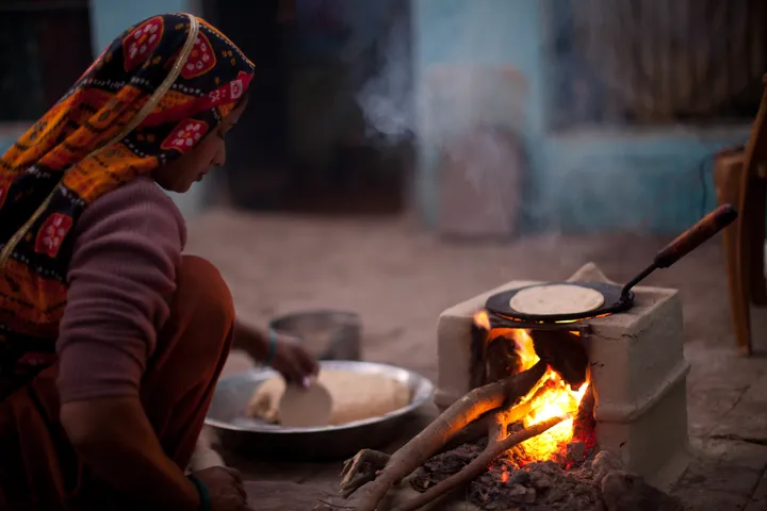BILLIONS Exposed
About 3.8 billion people — nearly half the world’s population — cook with solid fuels.
Overall, about 49% of the world’s population is still exposed to household air pollution from the burning of solid fuels for cooking. Most people who rely on solid fuels for cooking live in Africa and Asia.
The 10 countries with the highest proportion of households cooking with solid fuels are the Central African Republic, South Sudan, Rwanda, Burundi, Niger, Mali, Madagascar, Tanzania, Uganda, and Guinea-Bissau. In each of these countries, more than 97% of the population uses solid fuels for cooking.
modest progress
Changing practices have led to a modest drop in the use of solid fuels globally.
The percentage of the global population relying on solid fuels for cooking has dropped by 11% since 2010. This decrease has been driven primarily by trends in Asia, where years of efforts to improve access to clean energy sources, combined with development and urbanization, have begun to be successful. Progress has been slower in sub-Saharan Africa.
Figure K. Trends in the proportion of population cooking with solid fuels globally and in the GBD Super Regions, 2010-2019. Hover or tap to explore the data.
Trends in individual countries show important differences. Aggressive campaigns in Asian countries including China and India have led to widespread adoption of cleaner fuels over the past decade. China reduced the percentage of its population exposed to household air pollution from 54% to 36%, while India reduced its percentage from 73% to 61%.
In Africa, several countries saw a rise in the number of people exposed to household air pollution despite achieving a reduction in the percentage of households relying on solid fuels. This is because population growth outpaced reductions in the use of solid fuels.
Figure L. Change in population exposures to household air pollution in the 17 countries with over 50 million people and at least 10% of their population cooking with solid fuels. Toggle to switch estimates.
major disparities
Household air pollution exposure is far higher in poorer countries than in wealthier ones.
Populations in less-developed countries suffer the highest exposure to household air pollution.
People living in these countries more often rely on solid fuels that may be subsidized (such as coal) or fuels that can be gathered locally (such as wood, agricultural wastes, and animal dung). Often, these countries also lack the infrastructure to provide clean energy.
Exposures to household air pollution decline sharply with higher levels of development. The GBD project captures these trends with a metric called sociodemographic index (SDI).
Figure M. Household air pollution exposures in countries with different levels of sociodemographic development. Dots represent individual countries, color-coded according to GBD Super Region. Dot size reflects population size.


